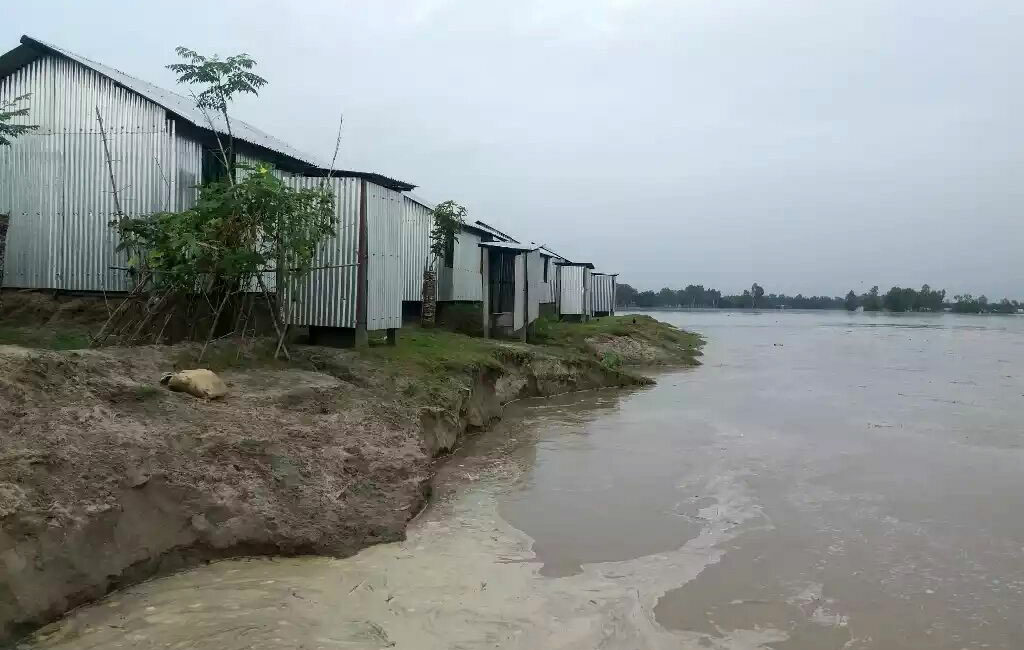A thirst unquenched

Bangladesh and India’s water-sharing negotiations have been going on for too long
High iron content in the groundwater of Sabroom in South Tripura, bordering Bangladesh’s Noakhali, has long been a matter of grave concern for the people living in the northeastern Indian township, who speak in Noakhali dialect.
Since the ‘90s, India has been asking for withdrawal of some water from a surface source — the Feni River — to supply Sabroom habitants with iron-free fresh water. Feni, being a transboundary river with Bangladesh and India being its co-riparian, has since been on top of the agenda whenever these two South Asian neighbours talked about water sharing of transboundary rivers.
During Prime Minister Sheikh Hasina’s recent India visit, Bangladesh finally agreed to allow India to withdraw 1.82 cubic feet per second (cusec) of water from the Feni River for drinking purposes of the people of Sabroom.
The last time the ministerial-level Indo-Bangla Joint Rivers Commission (JRC) meeting was held in India was nine years ago; along with the Feni River, the issue of sharing the water of the Teesta was discussed with utmost prominence. In fact, both Bangladesh and India were on the brink of inking a deal on Teesta water-sharing, which apparently fell flat due to India’s failure to sort out domestic discontent over the issue.
After a lapse of nine years, when the JRC met at water secretary-level in August this year in Bangladesh’s capital, both sides agreed to fast-track not only the finalization of water-sharing of the Feni River but also that of the Teesta, and six other transboundary rivers: Manu, Muhuri, Khowai, Gumti, Dharla, and Dudhkumar. Among these, the lesser known ones may sound unfamiliar to many who do not live along the banks of these rivers but Bangladesh getting due shares of those waters is immensely important for the livelihoods of the people living in the lower riparian country.
So, Prime Minister Sheikh Hasina didn’t miss out on the opportunity to remind India once again that the people of Bangladesh are waiting for the early signing and implementation of an interim agreement for the sharing of Teesta waters, as agreed upon by both governments in 2011. In response, Indian Prime Minister Narendra Modi informed that his government is “working with all stakeholders in India for conclusion of the agreement as soon as possible.”
Both leaders directed the JRC to expeditiously exchange updated data and information, prepare the draft framework of interim agreements for the six rivers, and to firm up the draft framework of the interim sharing agreement of the Feni River.
What essentially transpires is that as far as the Teesta is concerned, differences of opinion between Delhi and Kolkata are still far from being resolved.
Teesta, being Bangladesh’s fourth largest transboundary river for irrigation and fishing activities, holds immense importance as far as the overall riverine ecosystem is concerned.
The river’s floodplain covers an area of 2,750 square kilometres in Bangladesh, with its catchment area supporting roughly 10 million people and a huge volume of crop production. Over one lakh hectares of land across five districts are severely impacted by upstream withdrawals of the Teesta’s waters in India and face acute shortages during the dry season.
Negotiations have been ongoing since 1983, when a preliminary arrangement had allocated 39% for India, 36% for Bangladesh, and the remaining 25% for the upkeep of the regular flow of the river.
Talks continued for several decades in between, without much headway until 2011, when Dhaka and Delhi reached an interim arrangement for 15 years — India would get 42.5% and Bangladesh 37.5% of the Teesta’s waters during the dry season. The deal was about to be struck but India informed Bangladesh in 2011 that one of its state governments (West Bengal in this case) had reservations about the water-sharing formula.
In a subsequent development, West Bengal Chief Minister Mamata Banerjee commissioned an expert, Kalyan Rudra, to give a report on Teesta water-sharing prospects. The Rudra report, submitted in 2012, has never been made public but Indian media reported on several instances that the report had stated that there was a shortage of water in the Teesta since the Indian government had been building hydro-power projects upstream.
In fact, it’s not only in Sikkim, in fact the Teesta water diversion was also made in West Bengal through the building of a dam and hydro-power project in Gajaldoba near Shiliguri. India completed the Gajaldoba project at a time when Bangladesh had to abandon its planned second phase of the Teesta Barrage irrigation project as the very command area of the first phase dried up due to very poor flow of water through the Teesta.
Since then, nothing much has moved except Dhaka routinely reminding Delhi about sealing a deal on Teesta sharing and Delhi coming up with predictable words of assurance.
In between Bangladesh and India there are 54 transboundary rivers while Bangladesh also shares waters from three other common rivers with Myanmar.
Reaz Ahmad is Executive Editor of the Dhaka Tribune.

